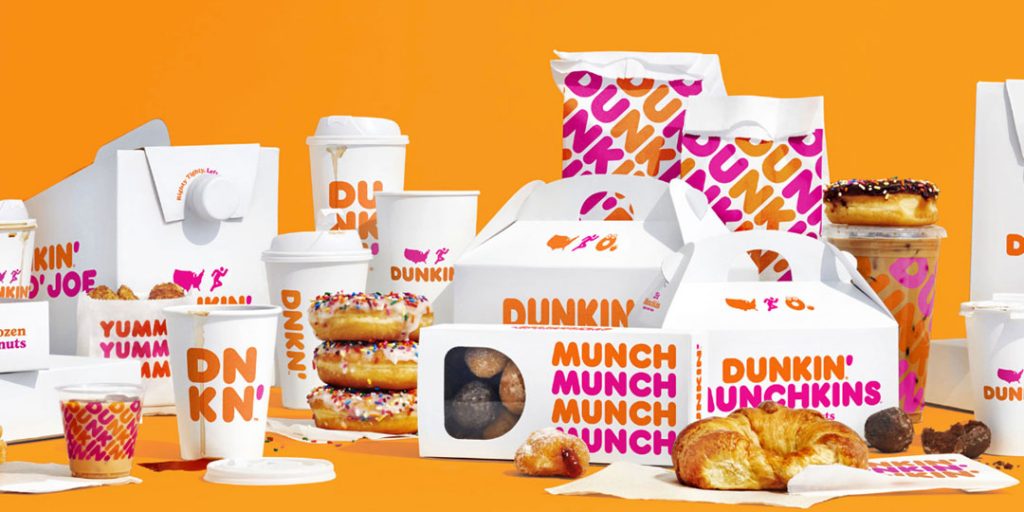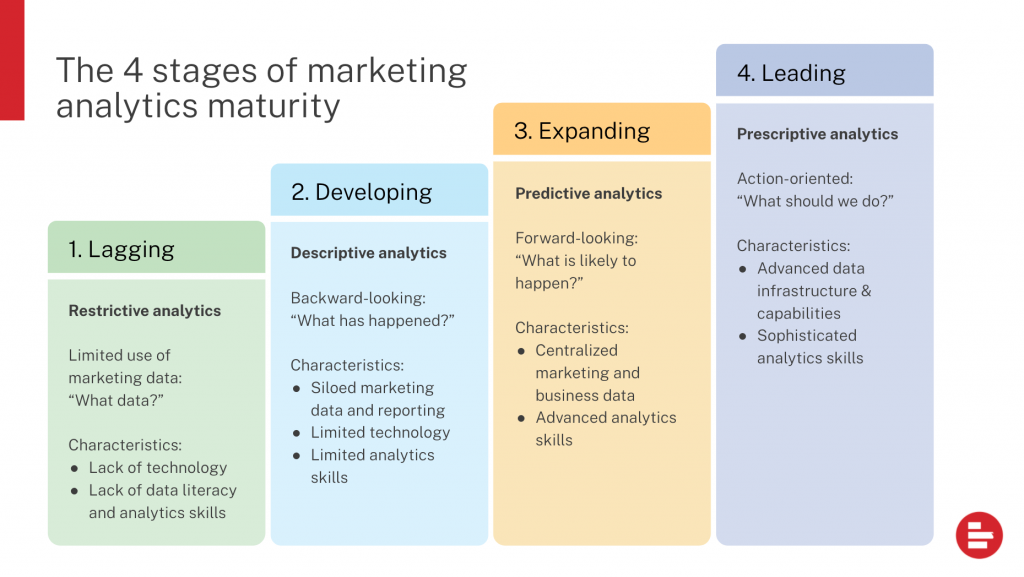-
Digital Slam Dunk
Way back in January 2019, famous American food-chain Dunkin’ Donuts conducted a very ambitious rebrand. Sales data was showing that coffee and breakfast sandwiches were overtaking donuts as their best selling item, so they literally took the word ‘Donuts’ out!

Image credit: Today This marketing decision wasn’t just about which products sell best, it was a chance to modernise their branding and kickstart a digital transformation. Dunkin’ has always provided great experiences for their customers, highlighted by their six-year streak as the “number one brand for customer loyalty in the packaged coffee category.” Nevertheless, they took the opportunity to cement this positioning through digital marketing techniques.

Image credit: The Packaging Company Dunkin’ launched their mobile app back in 2012, but has recently gained traction and recognition from consumers for its benefits. It allows order and payment before arriving at a store, which coupled nicely with their new drivethru locations, to provide full services during lockdowns. It also has a membership and perks system, where users can gain points from purchases and exchange them for free products. Company updates, like new drinks and food menu items, can now be more directly communicated to customers through the app as well as their social media pages.

Image credit: Dribble To secure their brand loyalty, Dunkin’ is establishing themselves as part of people’s lifestyle. To promote their rebrand, Dunkin’ released pop-up stores selling merchandise including apparel, iPhone cases, candles and much more. Since then they have had numerous brand collaborations, releasing a makeup range with e.l.f. and a sneaker with Puma. They are regularly posting on their social media accounts such as Instagram, TikTok, and Twitter to engage with customers. Their main focus is on younger generations, who have responded positively to their colourful and snappy rebrand. Dunkin’ has even gone a step further to brand some products with simply “DNKN’”.
Can you think of any Australian food-chains who should undergo a digital transformation in order to improve their brand loyalty?
-
Analytic Critic
Marketing analytics evaluates the effectiveness of specific marketing efforts by a business. This allows companies to get a better understanding of what has been contributing successfully, and thus informs future marketing activities.

Image credit: Salesforce There are many challenges facing marketing analytics, which makes it a difficult area to capitalise. The digital age has brought about more advanced tracking of consumer interactions, which means there is more data on record than ever before. 43% of Chief Marketing Officers (CMOs) found that their teams were spending more time analysing than they were making decisions. Another problem is the quality of the data, which is often unreliable. This has been a big culprit in wasted media budgets, while 34% of CMOs don’t trust the data they have available to guide campaigns. Other factors include lack of personnel to accurately interpret data and difficulty correlating data from various sources.
Image credit: Adverity This has resulted in marketing decision-makers leaning away from analytics, with only 53% of marketing decisions being influenced by information on hand. They are simply not reviewing data and rejecting recommendations, instead relying on intuition. It is predicted that by 2023, 60% of CMOs will heavily reduce their marketing analytics teams.
These figures stack up a bit different when looking specifically at business-to-business marketing. Those who have fully integrated data saw greater revenue growth (72%) compared those who don’t (53%). For businesses that have comprehensive strategies, 59% were successful at achieving goals, as opposed to only 14% for those who don’t.

Image credit: Supermetrics
The importance of marketing analytics is quite up in the air and the answer probably isn’t as simple as yes or no. What works for some will not always work for others, so it might be a question of what types of industries or businesses should continue to invest in this resource?
Have your say and comment below!
-
Social Meh-dia: The Many Failed Attempts of Google
Since its induction in the early 2000’s, social media has projected a phenomenal positive trend, with the number of users continually increasing. Social media platforms are used by one-in-three people worldwide and account for two thirds of all internet users. This doesn’t mean that every social media site is an instant win though.

Image credit: Our World in Data Along the way there have been countless casualties of social media platforms, who tried to win over society but came up short. Google is the not-so-proud parent to many of these with an exceptional history of trying to dethrone Facebook, let’s take a look.

Image credit: Insider Pro Orkut
Social media networking service launched in 2004, lasting ten years before being shutdown in 2014. Interestingly was reactivated early this year in April 2022, a story worth keeping an eye on.
Google Buzz
Social networking, micro-blogging, and messaging system developed by Google. It had a miserably short lifespan, being launched in February 2010 and then discontinued in December 2011. Eesh.
Other Google attempts: Google Friend Connect, Aardvark, Jaiku
Google+
“A revolutionary platform in the way it helped evolve search while further educating the world of web marketing about authority and entities across the globe.”
The network was launched in 2011, redesigned in 2015, and ultimately shutdown in 2019. So where was its downfall? Well, it wasn’t even really a social media site. It was better suited as an enterprise product, which might have explained the poor engagement rates. By the end, 90% of user sessions were five seconds or less.

Image credit: GoogleWatchBlog Thankfully, Google has learned their lesson.
Oh wait… no, no they didn’t.
Google Currents, which is still active, replaced Google+ in 2019. If the name sounds familiar, it’s because Google had a magazine article app with the exact same name in 2011. Which, you guessed it, failed.
GIF credit: Tenor Do you think Google will ever find the answer? Or should they just be satisfied with what they have achieved as a search engine?
-
Do You Have a Moment?
No, not to talk about our lord and saviour Jesus Christ. Throughout our day we have what Google has coined “micro-moments”. Anytime we have a thought we want to explore, we involuntarily grab our phones in search for the answer. You might be waiting for class to start, travelling on public transport, or maybe bored by an online lecture. These are micro-moments, and they are commonly identified by four phrases; I want to know, I want to do, I want to go, I want to buy.

Image credit: Veriday This concept was conceived by improved speed of search engines along with the increased capacities of smartphones. We now have access to a wide library of reviews and product information mid-shop, by simply consulting Google or social media on our devices. It proposes an alternative to how most brands consider consumer journeys, which usually follows a linear buyer funnel concept.

Image credit: Skyword Micro-moments on the other hand suggest that the consumers journey is much more sporadic and unstructured, with little patience for anything below our high expectations. Decreasing brand loyalty and increased exposure to new companies has also seen a push towards this new line of thinking. For these reasons, each individual moment must be fully optimised and marketing teams cannot rely on reserving the greatest impact for a particular part along the customer’s journey.
In order to make the most of a micro-moment, brands need to predict consumers’ needs and the environment in which they do research to satisfy them. This also involves stretching marketing efforts across multiple platforms and channels, and displaying them in different formats.
Are you often prompted to research a product by marketing material or do you act on random micro-moments?
For interesting stats on micro-moments, check out this infographic by Google.
4 responses to “Do You Have a Moment?”
-
-
Thanks for your thoughts Ben!
LikeLike
-
-
Hi Brad, what an interesting post! I never realised how my sporadic method of searching can influence my relationship with different brands. Like you said, I think micro-moments indicate how important it is for marketing messaging to be consistent across all points of the customer journey.
-
Thanks for your comment Hilary! The right ad at the right time can be the difference sometimes.
LikeLike
-
-
-
Time for a Digital Upgrade? Good Call.
It is common knowledge that businesses need to have a digital presence to generate engagement, increase their brand awareness and ultimately grow. Online is the place where consumers go to find what they want. Websites are, by quite a margin, the most popular method of research before a purchase, followed by social media.

Image credit: optinmonster With this being said, a surprisingly high 70% of initial digital transformations fail. Here are some general rules of thumb to follow:
- Focus on quality, not size
- Ensure all strategies integrate the company
- Consider the role of competitors
Let’s look at the glass half full. 7 Eleven is an example of a brand that successfully digitalised their presence. In the wake of the trend for food to come to consumers, led by the likes of Uber Eats, Deliveroo, and DoorDash, 7 Eleven saw the opportunity to expand its business. Commonly renowned for petrol and household essentials conveniently in the one place, they expanded their business model to become a food delivery service too. Through their app 7NOW, customers can order their favourites along with meals not previously offered in stores.

Image credit: MobileSyrup 7 Eleven are looking to capitalise on their newfound engagement with consumers by positioning themselves as a reliable and eccentric brand. They can be found across all major social media platforms, including YouTube, Instagram, TikTok and more, with a powerful aesthetic that combines retro and pop culture to create a youthful and colourful presence.

Image credit: 7 Eleven They have even gone as far to launch an online merchandise store that harnesses the attributes described above, to further connect customers with the brand and establish brand loyalty.
Can you think of any other brands that have gone through a successful digitalisation? Or perhaps brands you think didn’t quite get it right?
-
Mmm… Cookies, Nom Nom Nom.
Something that once brought great frustration, which we now have come to accept and expect, is website cookies. While we have come to terms with their presence on essentially every website, the general populations understanding of them is still quite limited.

Image credit: Memes Essential and non-essential are the two main broad types of cookies. Essential cookies are used for the transmission of communication and cannot be turned off in preferences because they are necessary to function a website. Non-essential cookies might be used to analyse behaviour or show ads.
Within these, they can also be categorised by how they store information. Session cookies are deleted when you leave a site, while permanent cookies stay in operation even when the web browser has been closed. This is important for remembering login details and passwords. Website owners and third parties can install cookies to collect data to remember user preferences, demographics, and spending habits to make sure certain markets are being targeted.

Image credit: Chelsweets
The reason we are so aware of cookies is because we legally have to be. Websites must be transparent about their intentions and get consent to use and store them on a device.
What do you think of the regulations for cookies? Do you like being in control of your preferences when you visit a website? Or would you rather not be stopped and assume your data is being collected?
Click on this link and go to 2 minutes to see what the Cookie Monster thinks of web cookies!
-
Hey Google… What’s My Location?
Smartphones have essentially become backups of our lives. The more our devices have been modified to do, the more information they have been able to learn. From basic interests and where we like to shop, to sensitive information regarding online activity and banking, it stores it all. While we may feel as though we have control over what information we make public, settings run deep and companies are not always as transparent as they seem.

Image credit: Certo Despite current and future generations having a laxed view on keeping personal information private, there are many regulations in place to prevent companies from taking advantage of online activity. The use of location data is one of these. Marketers try to get people to “opt in” to letting sites and apps use their location. This allows them to create more relevant advertising and nudge consumers to different products or stores in certain environments.

Image credit: Dunst Consulting This can be very helpful, like when shopping online and needing to check where a product is nearest available in stock. Also, by using an IP address, Google can filter out unhelpful search results, like cafes or supermarkets that are far away. However, companies can be deceitful about their use of this data, such is the case with Google, who were recently fined $60 million for misleading consumers. Google implemented two separate settings concerning location tracking, where both needed to be switched off to prevent data usage. Consumers were not aware of this, which constituted a breach.
Are you worried about the privacy of your location? If so, what steps do you take to protect it?
-
Position Zero is the New Position One
SERP position zero, also known simply as ‘the zero position’, is something that most people would come across multiple times daily. You know when you search something on google, and before it lists different search results there is a suggested answer for your query. Well, that information is position zero and is referred to by Google as a ‘featured snippet’. To rid any early confusion, SERP stands for ‘search engine results page’. It has been an important advancement for modern SEO (search engine optimization), including voice search, as it allows you to get the answer you’re looking for without having to click a link.

Image credit: Backlinko This doesn’t mean that there will always be a featured snippet. Google may not have an answer it feels best fits the question, perhaps due to its complexity, so it will direct you to sites that may offer the most accurate insight. It may also have to do with how a question is phrased. Looking for lists, how-tos, definitions, or comparisons generally fall under the ‘intermediate difficulty’ category and are more likely to generate the position zero.
There are many benefits of occupying the position zero, including greater traffic, SERP visibility, and credibility. It has been found that 28.5% of searchers click on the first site they see. Unfortunately, maintaining position zero is a bit of a juggling act. Snippets can come in essentially any form and sites don’t have to be the number one search to gain position zero, which is good. However, the algorithm that decides the position zero is highly unpredictable and has been known to offer different answers to the same question.
While you wait for next week’s post, ask yourself, does occupying the position zero add to a sources credibility?
Like to watch and learn? Check out this short video covering this week’s topic.
2 responses to “Position Zero is the New Position One”
Leave a comment





Leave a comment